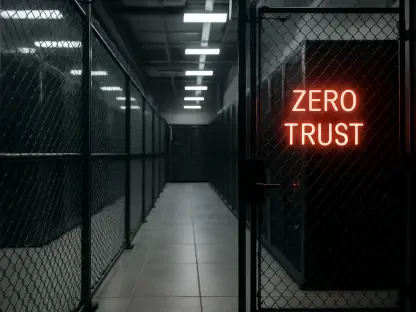Imagine the very strategy meant to safeguard your organization’s data is, in fact, creating vulnerabilities. This unsettling reality is driving cybersecurity experts to challenge conventional risk management approaches and consider a more urgent and aggressive tactic known as danger management.
Rethinking Cybersecurity Strategies
Cyber threats have evolved dramatically over the years, transitioning from simple viruses to complex ransomware attacks. While traditional risk management has been the norm, it often proves inadequate in addressing modern cyber threats. The scale and sophistication of these attacks can lead to catastrophic consequences for businesses and society. It’s time for organizations to re-evaluate how they protect their digital assets.
Beyond Traditional Risk Management
Risk management has long been defined as the process of identifying, evaluating, and mitigating potential threats based on probabilities and historical data. However, this approach is increasingly seen as reactive, overly reliant on past events, and insufficient given today’s fast-paced cyber landscape. Cybercriminals act unpredictably, often outmaneuvering organizations that depend on statistical models to foresee risks.
In contrast, danger management embraces a proactive stance, treating every threat as an immediate and tangible danger. This approach necessitates treating all network interactions with suspicion, implementing stringent defenses, and promoting a culture of constant vigilance. Danger management focuses on direct action and preparedness rather than hypothetical scenarios.
Case Studies and Organizational Transition
Several organizations have successfully transitioned from risk management to danger management, demonstrating its efficacy. One such example involves a company that implemented Zero Trust Architecture, leading to a substantial reduction in cyber incidents. However, the shift to danger management isn’t without challenges. Organizations must overcome ingrained mindsets, adjust their security protocols, and cultivate an environment of immediate action against threats. Additionally, fostering a culture that prioritizes danger management requires engaging all employees in continuous training and awareness programs.
Expert Opinions and Research
Industry leaders and cybersecurity experts have underscored the necessity of adopting danger management. Research highlights an increasing urgency to address threats directly rather than relying on outdated risk models. Anecdotal accounts from cybersecurity professionals reveal the harsh realities of cyber attacks and the limitations of conventional methods. For instance, the Ponemon Institute found that the majority of organizations experienced shutdowns after ransomware attacks, emphasizing the need for more aggressive defense strategies.
Implementing Effective Strategies
Shifting to danger management involves several key strategies. Implementing Zero Trust Architecture ensures continuous verification and access control, protecting valuable assets from both internal and external threats. Developing proactive defense mechanisms through real-time monitoring and thorough incident response plans is essential. Regular drills and employee training sessions are vital to recognizing and responding to threats promptly.
Cultivating a culture of vigilance necessitates educating employees about the importance of immediate action against cyber dangers. Advanced cybersecurity tools and software play a crucial role, requiring organizations to stay updated with the latest defense technologies. Embracing innovation and remaining aware of evolving cyber threats ensures a robust defense posture.
Conclusion
The era of risk management in cybersecurity concluded with organizations realizing its limitations. Transitioning to danger management offers a more effective and resilient approach to safeguarding digital assets. Organizations must prioritize proactive defenses, cultivate a culture of vigilance, and leverage technological advancements to confront cyber threats directly. By adopting danger management, businesses can enhance their cybersecurity strategies, ensuring a more secure and robust defense against increasingly sophisticated cyber adversaries. The future of cybersecurity lies in perceiving threats not as risks but as immediate dangers demanding decisive action.









